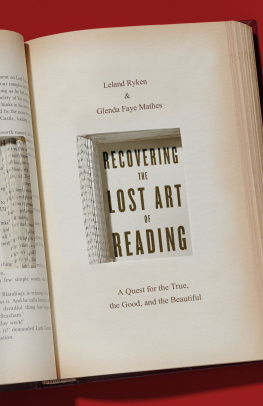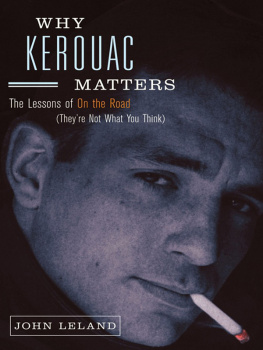I know your type. This is the worst nightmare. Ive dreamed of this on the subway. If you werent a journalist youd never be invited to anything hip.
LOU REED
T he proper way to read this book, of course, is from the back, checking to see if your name is in the index. If it is not there (and lets face it, what are the chances?), my apologies. Somehow your hang time at the Six Gallery in North Beach or Northsix in Williamsburg, your matted coif or ironic eyeglasses, your collection of white-label vinyl or Bukowski first editions, fell through one of the many holes in this book. Perhaps the hip guy you knew in high school or wished you knew at the needle exchange is not in here, either. Hip is an elusive thing, and sometimes must be its own reward. Take comfort that you are in good company. If all the hipsters omitted from these pages were gathered together, they could fill the back room of Maxs Kansas City from now until the next Velvet Underground reunion. With luck, no one would pay his or her tab, and only a sucker would eat the chickpeas.
If you are in the index, another sort of apology is in order. This is not a conventional history, faithfully reporting the experiences of the people who lived it. Instead, it is a history of a public perception, which by its nature is sometimes awry. Its distortions are part of what makes hip. If you think of Eric Dolphy onstage at the Five Spot, or Rakim writing rhymes in Long Island, you might imagine that they are thinking very hip thoughts, but it is this imagination, and the actions that arise from it, that determine hips course. Hip is a romantic idea, not a catalog of facts. The accounts of lives and events in this book are intended to capture these myths, noting when necessary how far they stray from the facts. Hips truths are literary but not always literal.
Ive chosen to tell this history through public figures not because they are hipper than other peopleno one who has seen Bob Dylan blow Hava Nagila on the Lubavitcher Hasidim telethon can believe in the infallibility of celebritiesbut because the public perception of their hipness affects so many people at once. The celebrities are just focal points for broader phenomena. Hip: The History is about the waves that ripple through the big pond, not the composition of the stone that causes the wave. In truth, many of these celebrated figures led melancholy and isolated liveship to think about, but tough for those who lived them. Someday more advanced pharmacology may make hip obsolete. In the meantime, there is perhaps just one way to reconcile Neal Cassadys decision to freeze to death beside a railroad track in Mexico with the actions of those who followed him on the road, drawn by their image of him as a wild, yea-saying overburst of American joyand that is to note that hips history, and the world we live in, proceeds from that misperception, not from the reality of Mexican cold.
Like other histories, this book indulges in the cheat of hindsight. In judging what is hip and what is not, Ive sided with things that shaped or predicted whatever came next. This is admittedly a form of cherry picking: nothing is easier than identifying prescience in the past. Thus, Keith Butler, the Brit folkie who screamed Judas! when Dylan played electric at a 1966 concert in Manchester, does not have a place in this book, but Jim Carrollwho can be heard on the Velvet Undergrounds Live at Maxs Kansas City asking, Is that a down? What is it? A Tuinal? Give me it immediatelywill forever belong in hips lore. History abandoned the acoustic purists, but smiled on urban poets with an appetite for pills. And so, therefore, did hip.
But enough about other people. After seeing that your name is not in the index, how are you supposed to proceed? With a grudge. After all, hip is a competitive sport. The proper reason to read this book is for the satisfaction of knowing that your hipness is hipper than whatever knowledge passeth herein. Surely the book calls for no less. It is in the nature of hip that it is always tearing down shibboleths, including its own, in order to bring more noise. This is why it endures, why it is important. It is always seeking a smarter way. So if you must, raise a glass of Hatorade. I would. But please remember the words of Ice-T, and dont hate the player, hate the game.
As for me, you will not find my name in the index, either. There is something inescapably nerdy about compiling a history of hip. My kind can only console ourselves, like my former colleague singled out in the epigraph above, that we are with Lou Reed in his dreams. As the saying goes, those who can, do. Those who cantwell, you know the rest. And if you are riding the subway, pleasant dreams.
[T]he Negro looks at the white man and finds it difficult to believe that the graysa Negro term for white peoplecan be so absurdly self-deluded over the true interrelatedness of blackness and whiteness.
RALPH ELLISON
T he Oakland soul group Tower of Power asked the question in a 1973 song called What Is Hip? The band had a reputation as wordsmiths, inventing terms like honkypox , for listeners who could not get on the good foot. But on the Hip Question, they found themselves on slippery terrain, as poets before them trying to define soul or swing or love. The language curled back on itself:
Hipness isWhat it is!
And sometimes hipness is
What it aint!
Swaddled in nasty horns and a backbeat, this was a coy put-on, staged for the benefit of the honkypox. Everybody knows what hip is.
Or at least, everyone can name it when they see it. For something that is by definition subjective, hip is astoundingly uniform across the population. It is the beatitude of Thelonious Monk at the piano, or the stoic brutality of Lou Reed and the Velvet Underground, performing songs of drugs and sadomasochism as a projector flashed Andy Warhols films on their black turtlenecks. It is the flow of Jack Kerouacs bop prosody or Lenny Bruces jazzed-out satire, or the rat-a-tat tattoo of James Ellroys elevated pulp lit. Walt Whitman was hip; Lord Buckley was hip; Karen O of the Yeah Yeah Yeahs is too hip for her own good. Hip is the way Miles Davis talked, dressed, played or just stoodand the way Bob Dylan, after his own style, followed in kind (though both men strayed into injudicious leather in the 1980s). The streets of Williamsburg in Brooklyn or Silver Lake in Los Angeles comprise a theme park in the key of hip. Its gaze is the knowing, raised eyebrow of Dawn Powell or Kim Gordon, bassist in the downtown band Sonic Youthskeptical but not unkind.
The British linguist David Dalby traces the likely origins of hip to the Wolof verb hepi (to see) or hipi (to open ones eyes). So from the linguistic start, hip is a term of enlightenment , cultivated by slaves from the West African nations of Senegal and coastal Gambia. The slaves also brought the Wolof dega (to understand), source of the colloquial dig , and jev (to disparage or talk falsely), the root of jive. Hip begins, then, as a subversive intelligence that outsiders developed under the eye of insiders. It was one of the tools Africans developed to negotiate an alien landscape, and one of the legacies they contributed to it. The feedback loop of white imitation, co-optation and homage began immediately.
From these origins, hip tells a story of black and white America, and the dance of conflict and curiosity that binds it. In a history often defined by racial clash, hip offers an alternative account of centuries of contact and emulation, of back-and-forth. This line of mutual influence, which we seldom talk about, is not a decorative fillip on the national identity but one of the central, life-giving arteries. Though the line often disappears in daily lifethrough segregation, job discrimination and the racial split in any school cafeteriait surfaces in popular culture, where Americans collect their fantasies of what they might be. The center of American culture runs through Mark Twain and Louis Armstrong, and it is impossible to imagine eithers work without both African and European roots. Born in radically different circumstances and separated by history, they have as much in common with each other as with their peers from what either might call the ancestral homeland. Both are classicists and bluesmen, masters of language, breakers of the rules that would hold them apart. What they have in common is hip.












